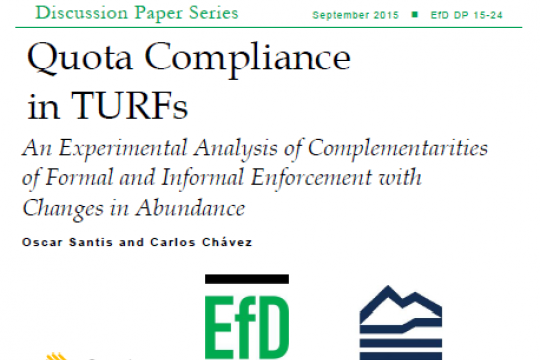We explore the effects of different enforcement mechanisms, including formal (external), informal (local), and both together, on individual compliance behavior under a system of territorial use rights in fisheries (TURFs). Our design considers different stock abundance levels and the effect that such differences may exert on extraction decisions and compliance behavior. The analysis is based on a framed field experiment conducted with artisanal fishers in central-southern Chile. Our results indicate that, regardless of the level of biological productivity within the managed areas, the combination of formal and informal enforcement mechanisms reduced individual extraction and transgressions with respect to formal enforcement. However, in the case of abundance, the use of a combination of enforcement mechanisms did not accomplish more than informal enforcement alone in reducing individual extraction and transgressions. We also found that while the formal (external) enforcement tends to complement the informal enforcement mechanism, it may also crowd out efforts from the group to control peers under low biological productivity. We discuss the policy implications of our results for the proper design of TURFs-based fisheries management
Quota Compliance in TURFs: An Experimental Analysis on Complementarities of Formal and Informal Enforcement with Changes in Abundance
EfD Authors
Country
Publication reference
Santis, O., & Chávez, C. (2015). Quota compliance in TURFs: An experimental analysis on complementarities of formal and informal enforcement with changes in abundance. Ecological Economics, 120, 440–450. doi:10.1016/j.ecolecon.2015.11.017
